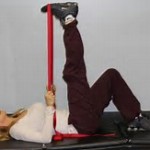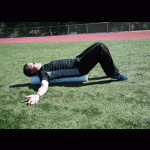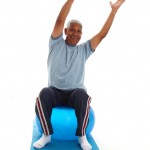Lying Hamstring Stretch
Sitting most of the day? Do this hamstring stretch to ease lower body and lower back tension. Lie down on the floor on your back. Extend your right leg straight up with your heel toward the ceiling. Place a strap or belt securely under the arch of your shoes to assist your stretch. Keep your shoulders and hips on the floor. Hold for 10 seconds, then release. Next, extend your left leg straight up toward the ceiling. Place the strap or belt securely under your arch. Hold for 10 seconds, then release.
*Consult your physician before performing stretch.
 Subscribe
Subscribe







